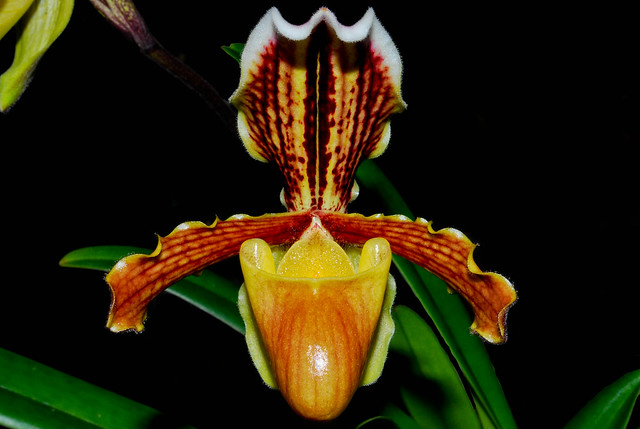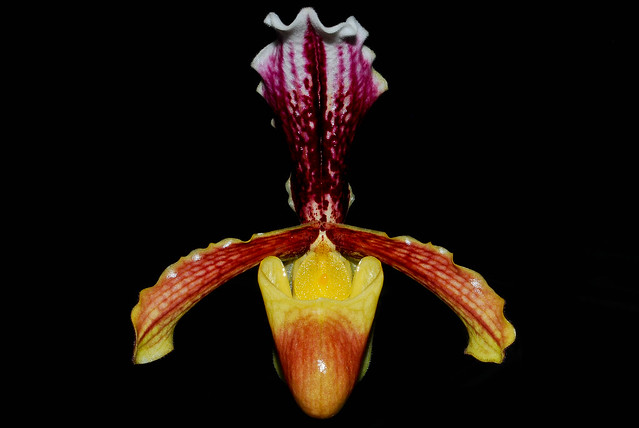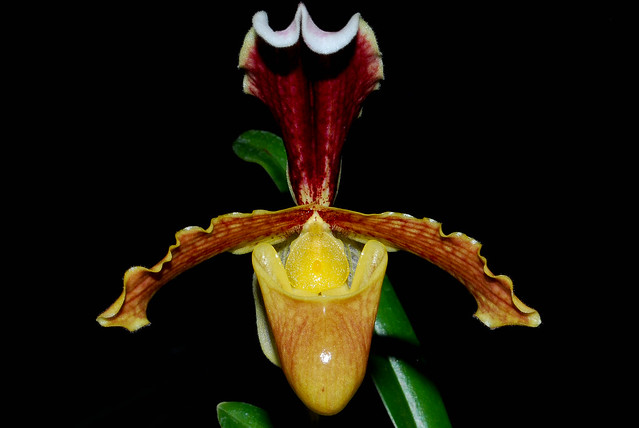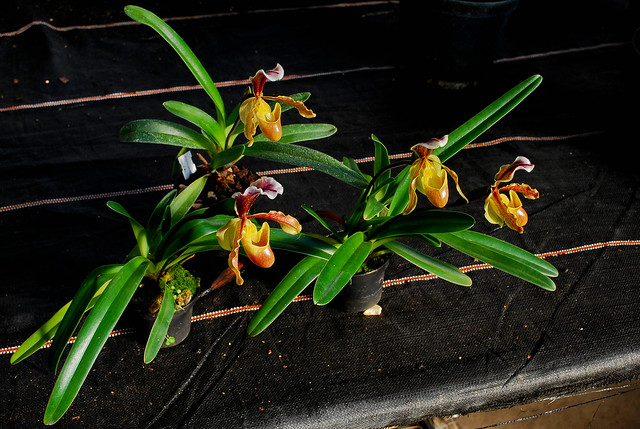I have been the first one to handle plants of sulivongii over 10 years ago. At this time they came in boxes from Laos, sold by kilogram. They are still sold in Thailand, usually under the name 'coccineum'.
The wild plants look exactly like druryi, hard leaves, erect. The earlier imports all had a black stripe in the dorsal like druryi, now not anymore. I think they overcollect in Laos, and they touched new colonies, with different flowers.
It is really different from barbigerum or coccineum, at least sulivongii is more different from barbigerum than villosum is from gratrixianum, or from even insigne.
Barbigerum, I have not seen real ones for years, they used to come from China, very fragile plants with succulent small, dark green leaves. The leaf base was extremely thin.
Coccineum, that's a good question, it is a name for a very broad group of plants from Vietnam only ( China does not have it at all, that's why they always order coccineum from Vietnam for ages... and they finished/wiped out the barbigerum long time ago, except few plants), ranging from 5cm leafspan up to 80cm leafspan, usually quite narrow leaves, various size and shapes, I would say anything from helenae up to esquirolei for the leaf size, shape, color, and some clumping, some never at all. They have flowers that are highly variable, some even with spots, some with pink color ( like Aquagem photo), some dark red miniature on tiny plants, some very big things with brownish flowers ( that some people claimed to be rhizomatozum recently, or vejvarutianum, but those two things were really different plants the first time they were collected and sold), big things with speckled dorsal... There are intermediates, so either they were separate species that remixed together through natural hybridation, or they are one very variable species.
Sulivongii is again different, the leaves are quite thick, the flowers are like Martin plants, and it is not close to barbigerum or coccineum. At least, I would say that the differences are such that, if one considers villosum as diffferent from insigne, then sulivongii is a different species from barbigerum or coccineum. It has no intergrade between it and other species. Martin plants are really beautiful.
Some 'sulivongii' in the trade came from Vietnam, and they are not the same at all, they are just big types of coccineum.











